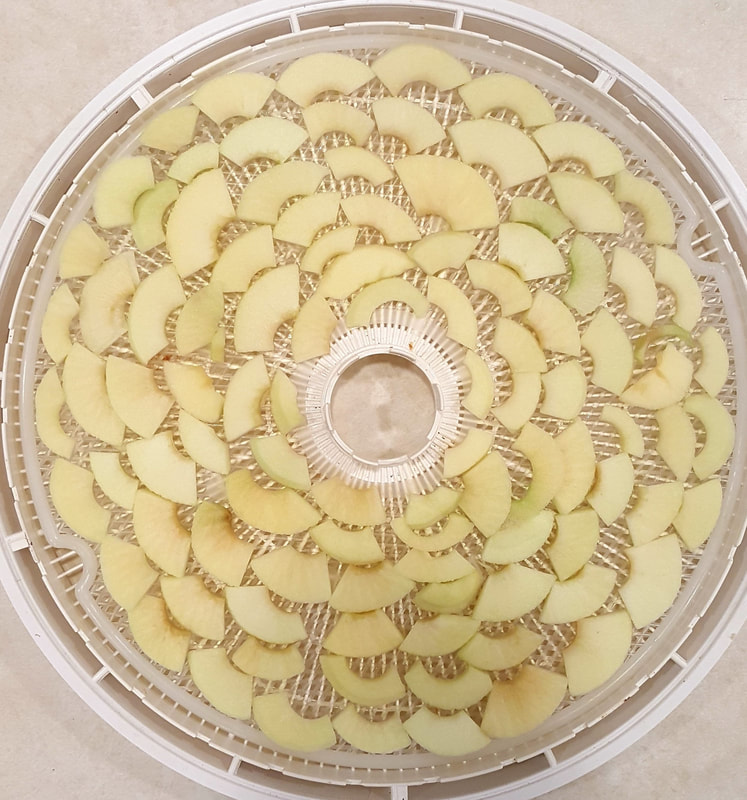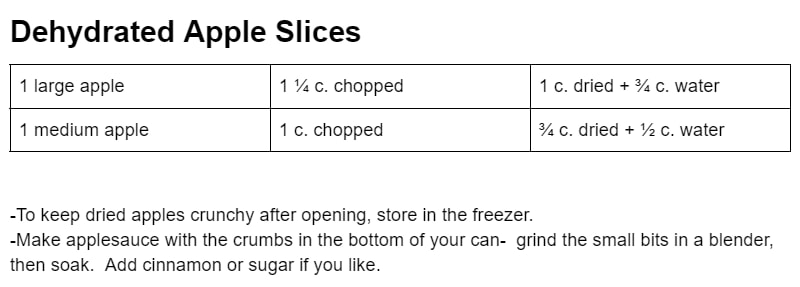But even when we had yards that weren't yet producing fruit, there was fruit to be found, just by looking around the neighborhood. I'd look for mature trees where the fruit was falling, walk up to the house, knock on the door, and ask if they'd like help using up their fruit. The answer was almost always a relieved "yes!" It turns out that many people with fruit trees can't utilize it all themselves-- especially if they're now empty nesters or young couples-- and feel sad about the waste. Learning that helped me feel less self-conscious about asking.
So- know that asking leads to a win-win. The owners can be happy that what they grew helped someone, and you are blessed with food for your family. This also builds good relationships and communication in your neighborhood.
All that, just from asking someone a simple question!
While some varieties of apples store well under refrigeration, most of us don't have that much fridge space. Because of that, most of my apples either become applesauce, juice, jelly, apple butter, or dehydrated apples.
You can use dehydrated apples in almost any recipe that calls for apples to be cooked. How much do you need of the dehydrated in place of fresh? See this chart:
Use dried apples in any recipe that calls for fresh apples. Just cover the dried apples with warm water and let sit for 15 minutes. Then drain and use as fresh apples. Make apple pancakes or apple muffins by reconstituting the dried apple slices and mixing into pancake or muffin batter.
Make an apple topping by simmering the slices in apple juice or water until soft, sweeten to taste with sugar, add cinnamon and nutmeg as desired and thicken with cornstarch. (1 Tbsp. cornstarch per cup of liquid that you have.) Serve warm on ice cream, plain white cake, pancakes, waffles, or cheesecake.
Stir dried apples into oatmeal or cream of wheat in the last few minutes of cooking. Mix with raisins and granola for a nutritious trail mix snack.
When using dehydrated apples, ¾ cup of apple slices is approximately one cup of fresh apple slices, or one medium apple. If your apple pieces are smaller, it will take less than 3/4 cup to equal a medium apple.
Most instructions say to soak them in warm water for 15 minutes. I've learned that if you soak them in just-off-the-boil water, at 5 minutes they were a little firm in spots, but not much. At ten minutes, they were close to the same. At 15 minutes, they’re considered fully hydrated but aren’t quite to that super-soft 'cooked' texture.
Heating them WITH the water, bringing to a boil, covering, and letting soak for 5 minutes yielded as good of results as 15 minutes of soaking.
Here's a great recipe to start with; I got it from my neighbor, Sheri Schiess, who worked at "the Cannery" in Logan, Utah, in the early 2000s. ("The Cannery" was what we called the local dry-pack cannery owned by the Church of Jesus Christ of Latter-day Saints, where we could purchase and can dried apple slices, among other things.) I don't know for sure where Sheri got the recipe, but she knew all sorts of things and was something of a 'pioneer' herself. The recipe likely goes at back at least to the mid-1800s.
Pioneer Dried Apple Cake
3 cups dried apple slices
2 cups sugar
¾ cup vegetable oil
2 tsp. cinnamon
2 eggs, beaten
1 tsp. baking powder
2 tsp. vanilla
1 tsp salt
2 cups flour
1 ½ tsp. baking soda
1 cup chopped nuts, optional
Cover apples in warm water, let soak for 15 minutes; drain. Mix cake in order given except add apples last. Pour into greased 9x13 pan. Bake at 350 degrees for 45-60 minutes. Let cool before cutting.



 RSS Feed
RSS Feed